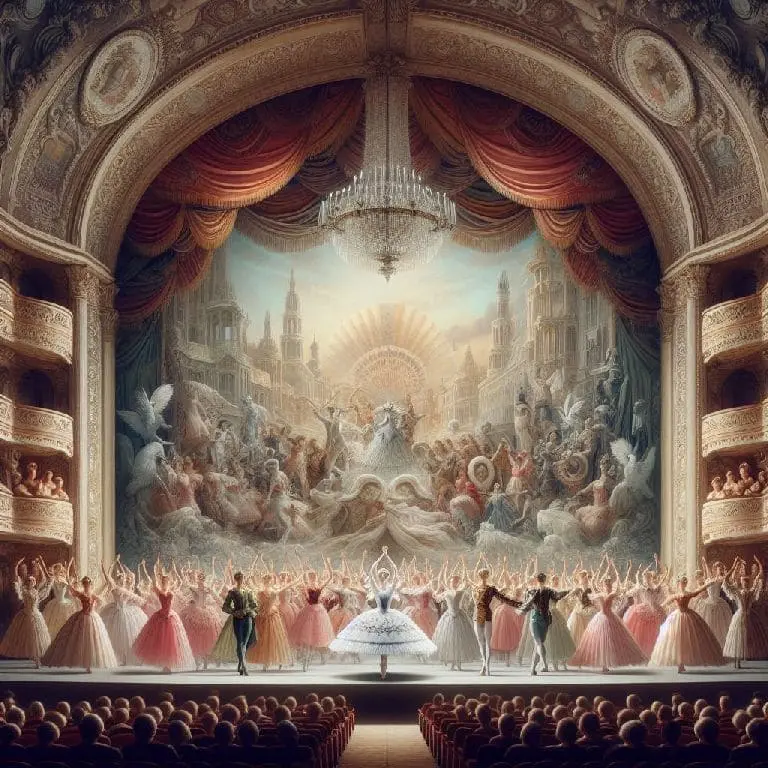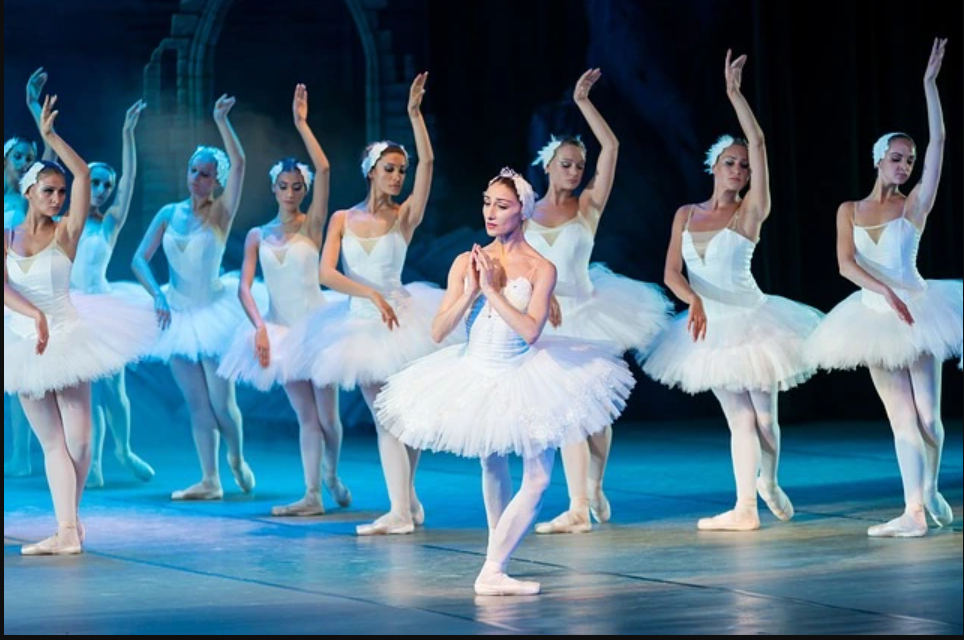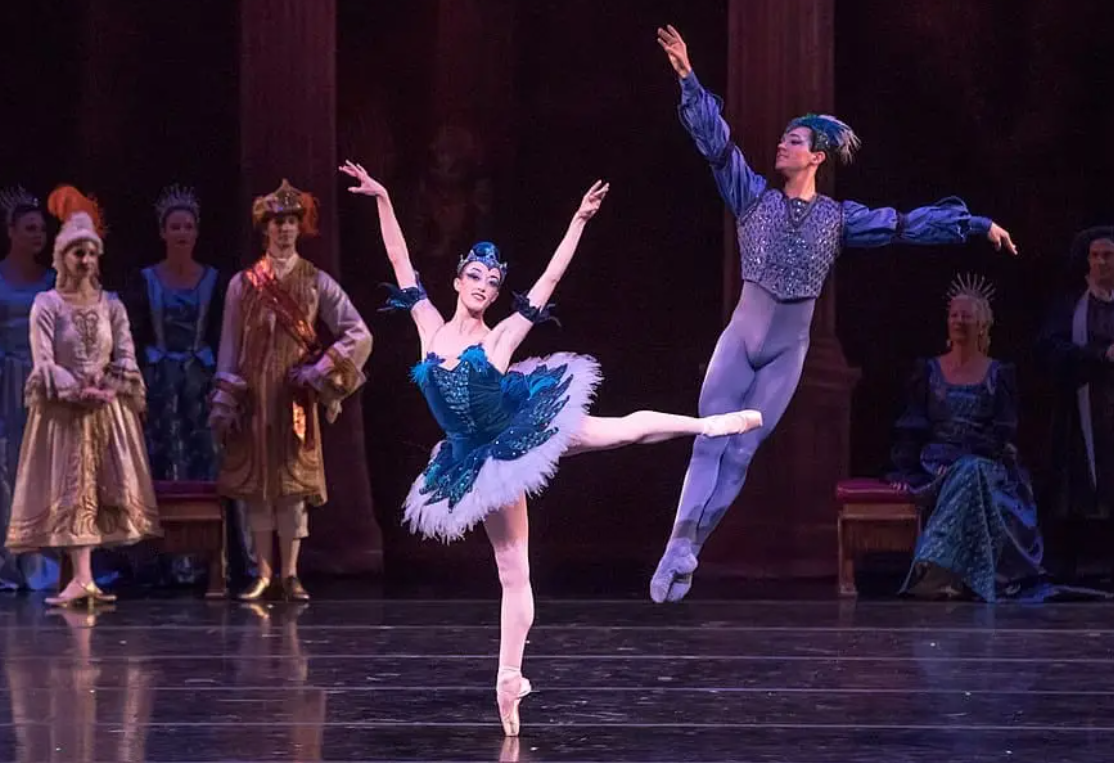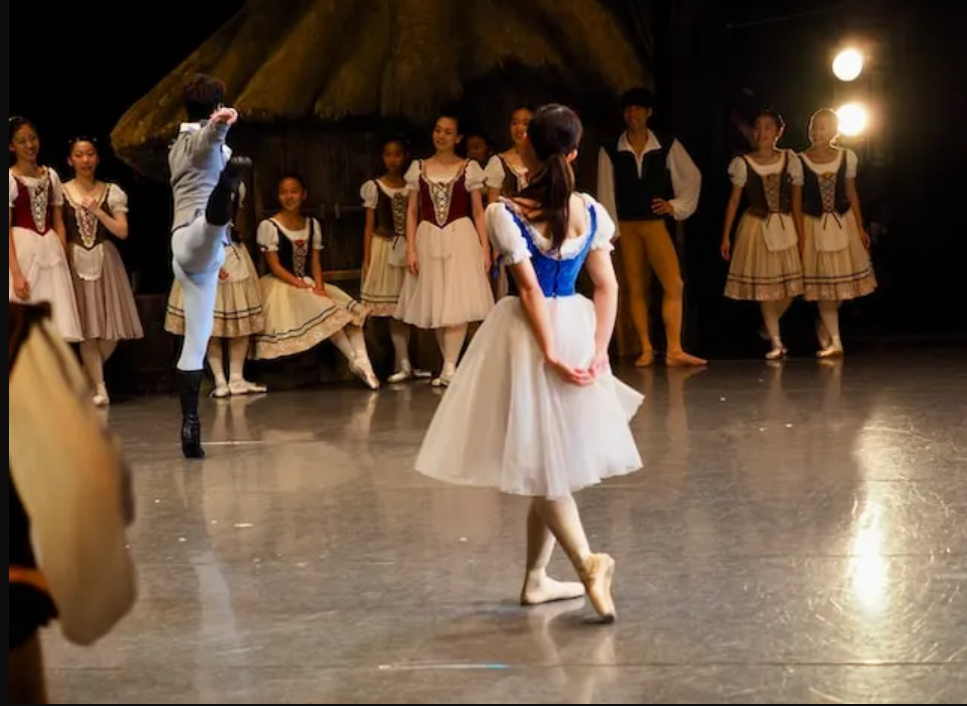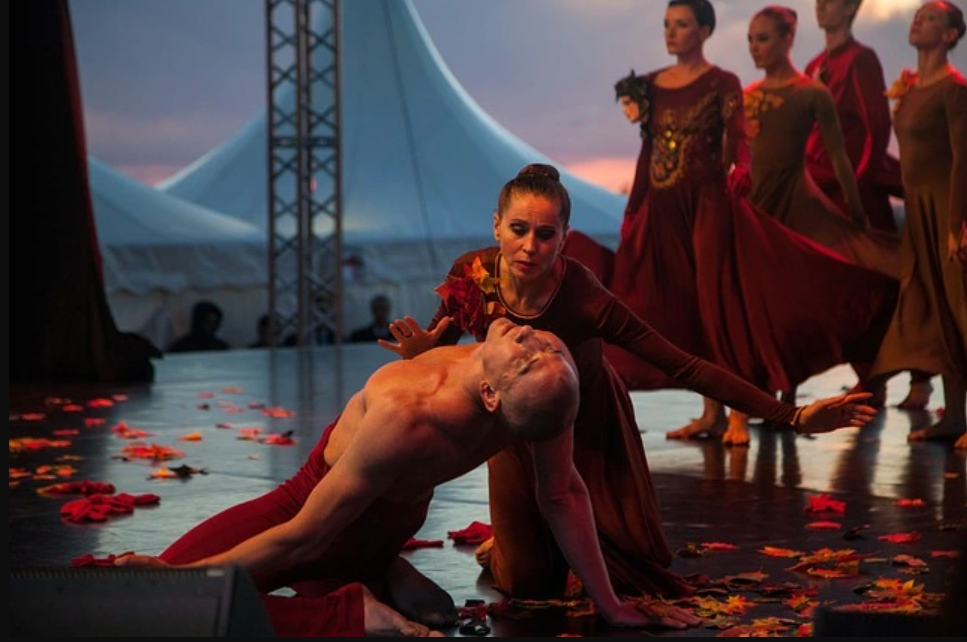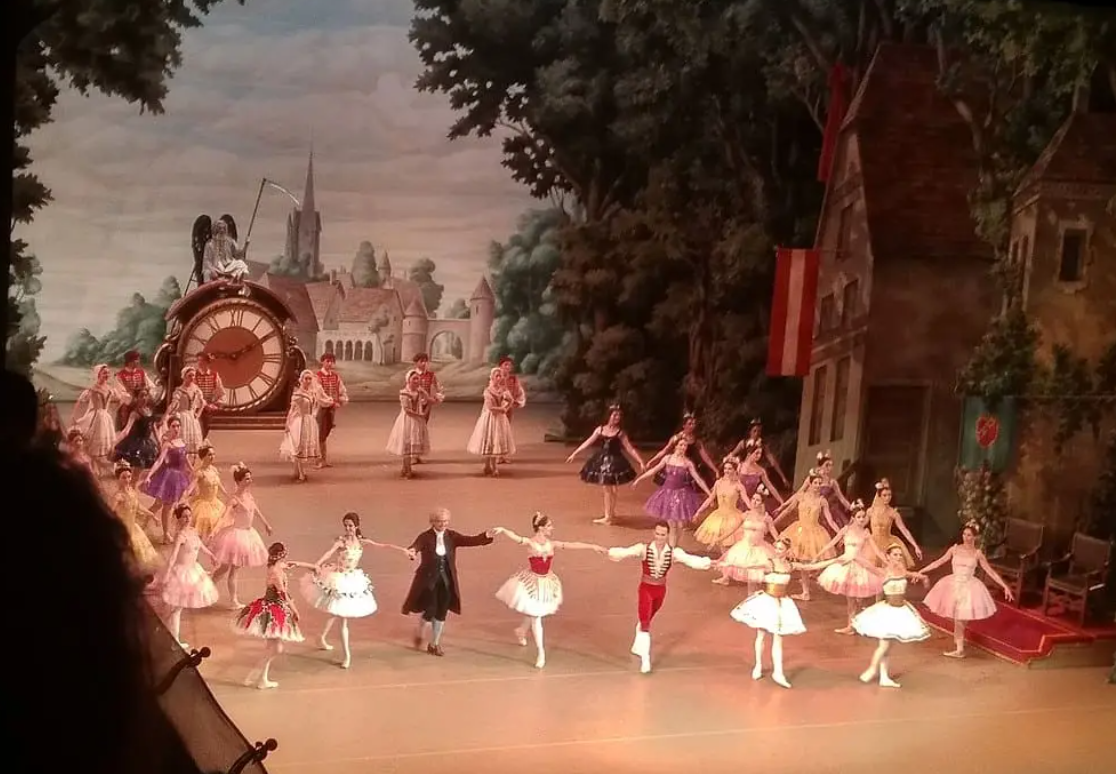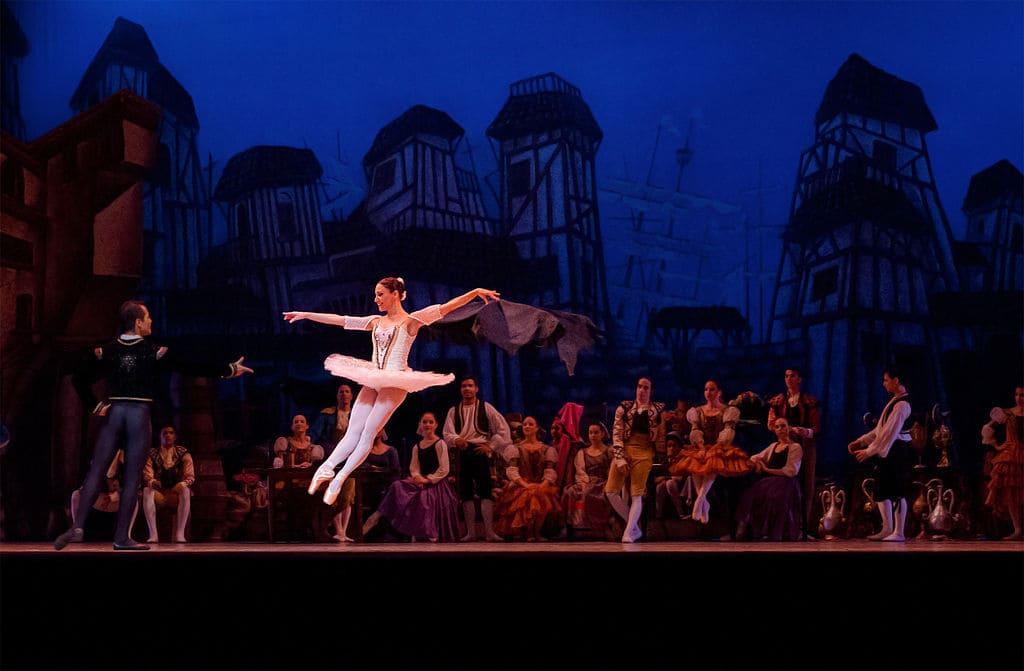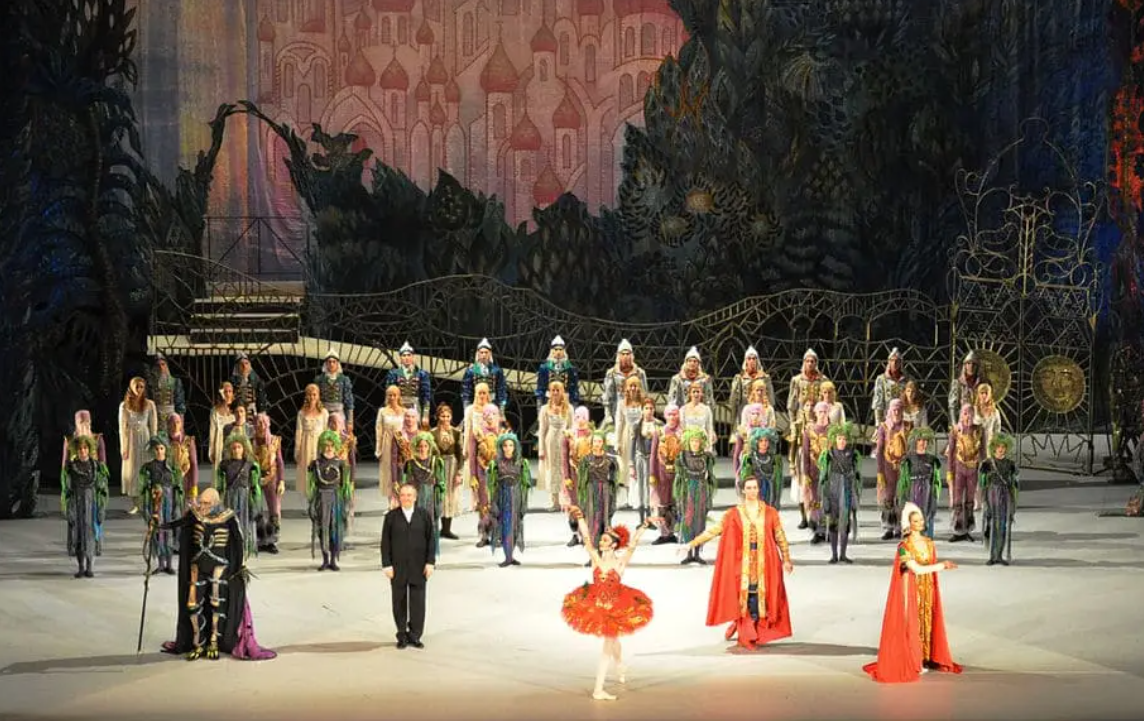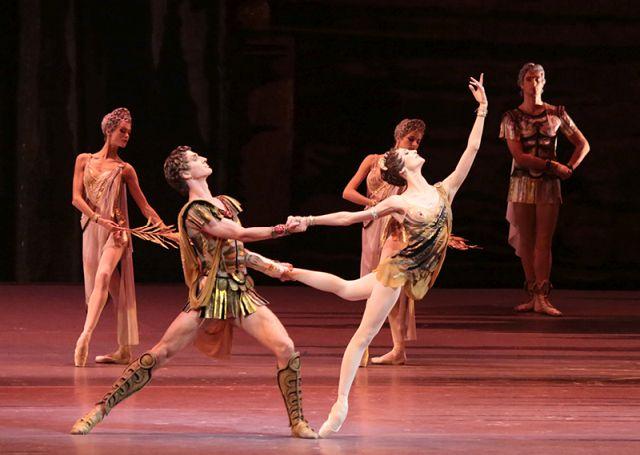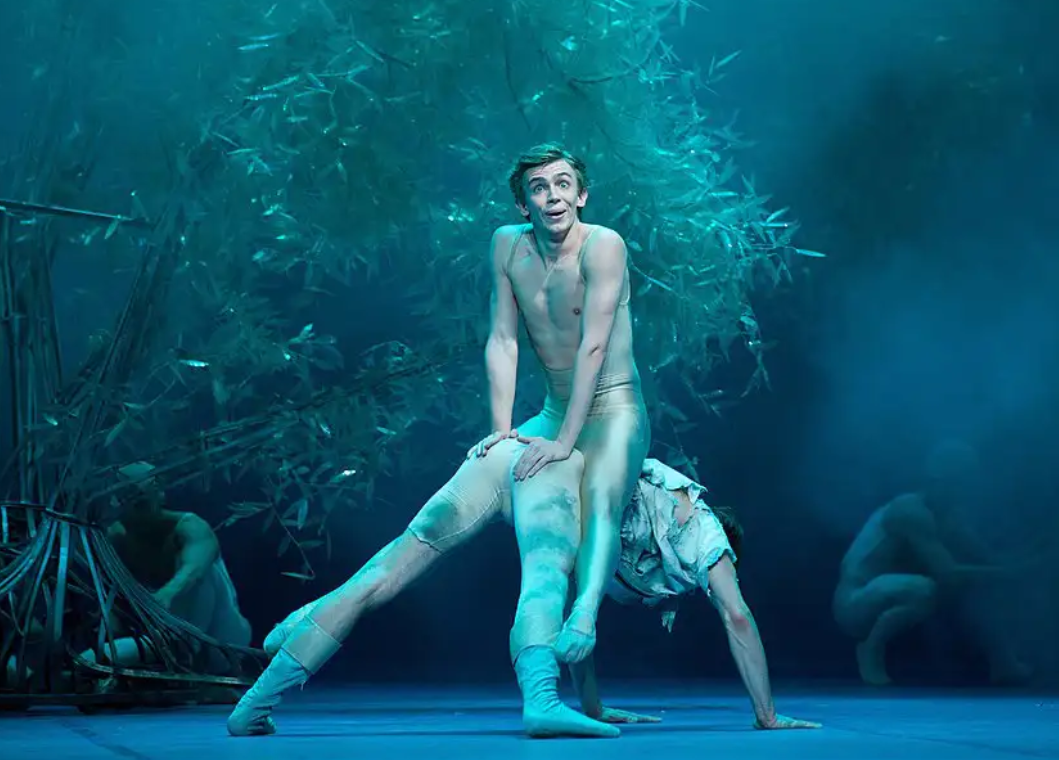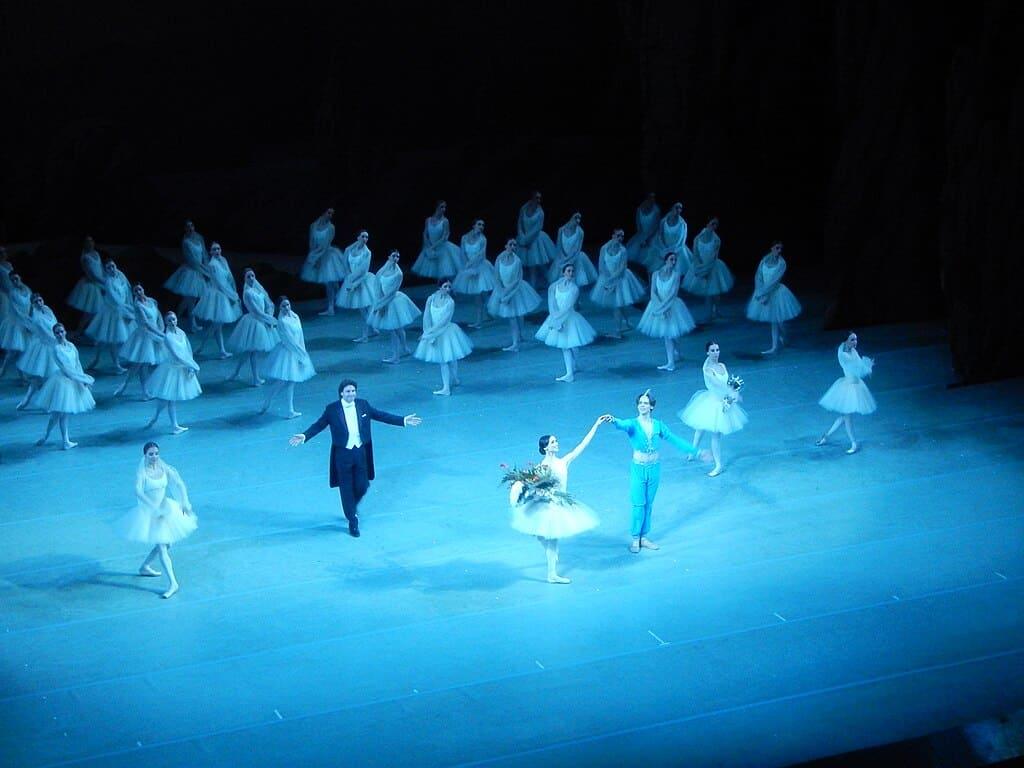Famous ballets you should see:
My top 11 list of the best ballets
By Olga Leibrandt · Last updated: January 2, 2024 · Ballet Blog · ⏱ 15 min. reading time.
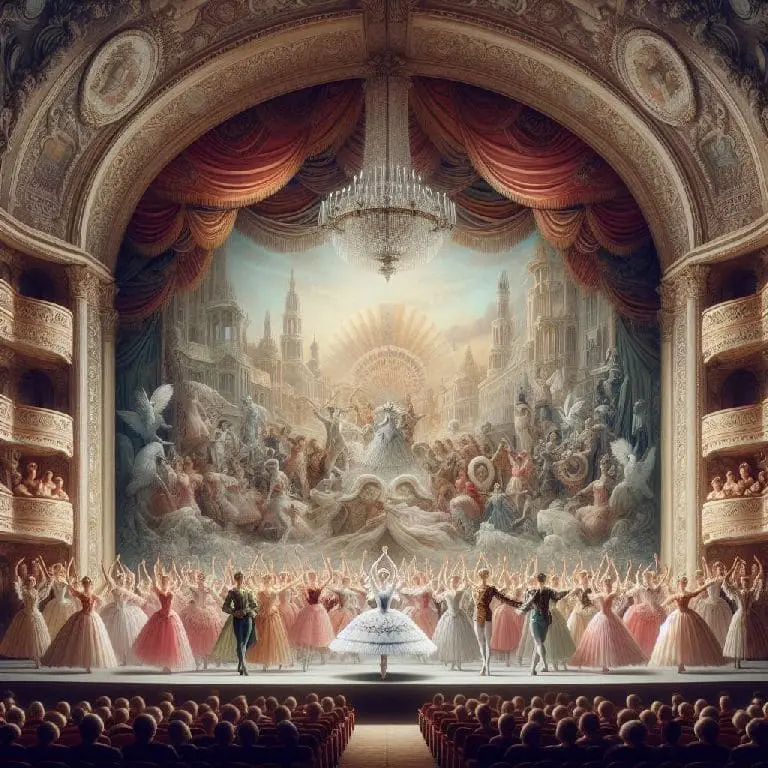
Image from Ballettstudio Ost under CC BY 4.0 - Details
The most popular ballets are often classical pieces that have been performed for many years. They are based on well-known fairy tales or stories and offer visual and musical splendor that appeals to audiences of all ages. The first three places on my list are topped by Tchaikovsky. This underlines his central role in the perfection of the romantic ballet.
Here is my selection:
- Swan Lake - Composer: Tchaikovsky
- Sleeping Beauty - Composer: Tchaikovsky
- The Nutcracker - Composer: Tchaikovsky
- Giselle - Composer: Adolphe Adam
- Romeo and Juliet - Composer: Sergei Prokofiev
- Coppélia - Composer: Leo Delibes
- Don Quixote - Composer: Ludwig Minkus
- The Firebird - Composer: Igor Stravinsky
- Spartacus - Composer: Aram Khachaturian
- A Midsummer Night's Dream - Composer Felix Mendelssohn-Bartholdy
- La Bayadère - Composer: Ludwig Minkus
The top 5 favorites on my list are also crowd pleasers. Hardly a season goes by without them being on the program or without an ensemble performing them. A closer look at the visitor numbers for the 2020/2021 season demonstrates the continued interest in the ballet's timeless classics.
Ballet visitor numbers 2020/2021
| ballet | Besucher | Berlin | München | Hamburg |
|---|---|---|---|---|
| In total | 826,000 | 442,000 | 380,000 | 86,000 |
| Schwanensee | 236,000 | 112,000 | 100,000 | 24,000 |
| Nussknacker | 220,000 | 105,000 | 100,000 | 15,000 |
| Romeo and Juliet | 180,000 | 90,000 | 70,000 | 20,000 |
| Giselle | 150,000 | 75,000 | 60,000 | 15,000 |
| Dornröschen | 120,000 | 60,000 | 50,000 | 10,000 |
Source: Annual reports of the Deutsche Oper Berlin, the Bavarian State Ballet and the Hamburg Ballet.
1. Swan Lake - Composer: Tchaikovsky
Plot of the ballet "Swan Lake"
As someone who has watched and danced to "Swan Lake" many times, I can't help but put it number one on my list. The ballet has a timeless beauty and an emotional depth that simply inspires me. With his melodic talent and ability to convey emotions in his music, Pyotr Ilyich Tchaikovsky created a masterpiece that touched the hearts of audiences worldwide.
- The plot of "Swan Lake" takes us into a fairytale world in which the true love between Prince Siegfried and Princess Odette fights against the dark forces of the evil wizard Rothbart.
- The ballet consists of four acts and was written by Pyotr Ilyich Tchaikovsky. In the story, Prince Siegfried falls in love with Princess Odette. She was transformed into a swan by Rothbart, an evil sorcerer.
- Odette can only exist in human form at night. The spell can only be broken by true love. Rothbart attempts to thwart this love by presenting Odiles, a black swan, who misleads Siegfried. In the end, Siegfried and Odette's true love triumphs over the dark forces.
Background to the ballet “Swan Lake”:
Pyotr Ilyich Tchaikovsky (1840-1893) was the most successful composer of the Romantic Age. He created numerous masterpieces, which we will discuss here. Tchaikovsky was known for his melodic talent and ability to convey emotional depth in his music. His works for ballet have had a significant influence on the development of this genre. Tchaikovsky's music for "Swan Lake" is famous for its grace, elegance and emotional intensity.
- The original idea for the ballet came from the Russian composer Vladimir Petrovich Begitschev. The source of inspiration was the German folk tale “The Wild Swans”. Begichev was unable to implement the project. He had problems with the structure of the work and could not come to terms with the requirements of the client, the Russian millionaire Nadezhda von Meck. So the task was passed on to Tchaikovsky.
- Tchaikovsky initially had difficulty finding the right inspiration and initially felt little connection to the plot. In addition, the collaboration with ballet master Julius Reisinger, who created the original choreography, was not harmonious.
- The premiere in 1877 at the Moscow Bolshoi Theater was therefore not very successful. The play received poor reviews. "The plot of the ballet is too long and confusing. The preparation is inadequate and the setting of the piece is not very appealing. Source: musikmph.de
- It was only after Tchaikovsky's death that "Swan Lake" became, in a revised form, one of the most popular and most performed ballets in the world. Marius Petipa and Lev Ivanov's 1895 choreography , often referred to as "the Petipa/Iwanov version", contributed significantly to the ballet's success. Despite its initial difficulties, Swan Lake remains a high point in Tchaikovsky's career and a masterpiece of classical ballet.

2. Sleeping Beauty - Composer: Tchaikovsky
Plot of the ballet "Sleeping Beauty"
“Sleeping Beauty” is also a ballet by Pyotr Ilyich Tchaikovsky . I love the emotional richness of this ballet. Tchaikovsky's music, especially the famous "Sleeping Beauty Theme", touches the soul and immerses the audience in the fairytale world. The production of "Sleeping Beauty" is a visual splendor that takes the audience on a journey through the power of love and awakening.
- The plot is based on the fairy tale by Charles Perrault and the Brothers Grimm. It tells the story of Princess Aurora, who falls into a deep sleep due to the curse of an evil fairy. She can only be redeemed by a prince's kiss.
- The ballet contains various storylines. These include the celebration of Aurora's birth, the curse of the evil fairy Carabosse, the awakening of love between Aurora and Prince Desiré and the triumphant finale.
Background to the ballet "Sleeping Beauty":
The premiere took place on January 15, 1890 at the Mariinsky Theater in Saint Petersburg. Tchaikovsky was worried about audience reaction at the time because his previous ballet, "The Nutcracker," was not well received. However, the premiere of “Sleeping Beauty” was a huge success. Tchaikovsky received a standing ovation and the ballet became one of the most popular works in his repertoire. Despite the composer's initial insecurities, "Sleeping Beauty" was recognized as one of the outstanding ballets of the Romantic period. It has since retained its permanent place in the classical ballet repertoire.

3. The Nutcracker - Composer: Tchaikovsky
Plot of the ballet "The Nutcracker"
My third piece, "The Nutcracker" is also a ballet with music by Pyotr Ilyich Tchaikovsky. I particularly like the creative choreography here. The dances in the different countries, from the kingdom of snow and flowers to the kingdom of sweets, are not only technically demanding but also beautiful. The variety of characters, from the Sugar Plum Fairy to the Mirlitons' dance, gives the ballet a special liveliness. The music to it is magical.
The plot is based on the story “The Nutcracker and the Mouse King” by ETA Hoffmann. The ballet is divided into two acts:
- First act: Clara Stahlbaum receives a nutcracker as a Christmas present from her godfather Drosselmeier. At night the Nutcracker turns into a prince and Clara is taken to a magical world. Here the Nutcracker and his toy soldier fight against the Mouse King and his army. The Nutcracker wins the fight and is transformed into a prince.
- Second Act: Clara and the Nutcracker Prince travel through various lands in the Snow and Flower Kingdom. In every country they are entertained by dances and fairy-tale characters. Finally they reach the kingdom of sweets, where the Sugar Plum Fairy and the Nutcracker Prince are throwing a party for Clara.
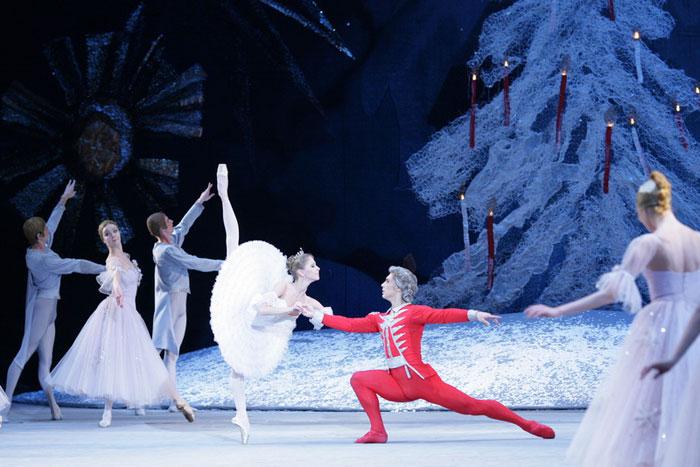
Background to the “Nutcracker”:
Pyotr Ilyich Tchaikovsky composed the music for The Nutcracker in 1892. The premiere took place on December 18, 1892 at the Mariinsky Theater in Saint Petersburg, choreographed by Marius Petipa and Lev Ivanov. The main roles were danced by Antonietta Dell'Era and Pavel Gerdt. “The Nutcracker” received mixed reviews when it premiered. "The plot of the ballet is too complicated and incomprehensible. It is difficult to keep track."
Nevertheless, over the years, “The Nutcracker” has become one of the most popular and frequently performed ballets worldwide. The music contains many unforgettable melodies, including the famous "Dance of the Sugar Plum Fairy." The ballet is often performed as a traditional Christmas piece and has a permanent position in the repertoire of many ballet companies worldwide.

4. Giselle - Composer: Adolphe Adam
Plot of the ballet "Giselle"
"Giselle" is a classical ballet composed back in 1841 by Adolphe Adam and choreographed by Jean Coralli and Jules Perrot. The plot is divided into two acts:
- First Act: Giselle, a young farmer's daughter, falls in love with Duke Albrecht, who has disguised himself as a farmer's boy. Unknowingly, Giselle is deceived by the Duke's true intentions - he is already engaged. When the truth is revealed, Giselle dies of grief.
- Second Act: The second act takes place in a cemetery. Here the spirits of the deceased girls, including Giselle, are led by the evil Wilis Queen Myrtha. The Wilis are ghosts of betrayed women. At night they look for men to dance to death. Giselle begs for mercy for Albrecht, who is being pursued by the Wilis, and saves him from certain death.
Background to “Giselle”:
“Giselle” is the oldest ballet on my list. It was created in the Romantic period, an era characterized by intense emotions, the supernatural, and the depiction of the connection between the natural and the supernatural. The ballet reflects these romantic elements in its plot and characterization. Adolphe Adam composed the music for "Giselle". The ballet was first performed in Paris on June 28, 1841. The main roles of Giselle and Albrecht were danced by Carlotta Grisi and Lucien Petipa. The ballet was a huge success and quickly became a classic of romantic ballet. The performance of "Giselle" has evolved over the years, but the basic elements of the plot and the emotional depth of the play have maintained its popularity to this day.

5. Romeo and Juliet - Composer: Sergei Prokofiev
Contents of "Romeo and Juliet" in the ballet:
“Romeo and Juliet” is the most recent ballet on my list. It is based on William Shakespeare's play of the same name. The plot tells the tragic love story between two young lovers, Romeo Montague and Juliet Capulet. The two find themselves in the middle of the conflict between their feuding families, who are engaged in a bitter dispute. Romeo and Juliet therefore maintained their love in secret. The story ends tragically with the two lovers committing suicide.
History of origin:
The ballet "Romeo and Juliet" was composed by Sergei Prokofiev. The ballet's premiere took place on December 31, 1938 at the Bolshoi Theater in Moscow. However, due to mixed reviews, the ballet was not as successful as others. The choreography for the now famous version was by Sir Kenneth MacMillan. This premiere took place on December 9, 1965 at the Royal Opera House in London.
- Prokofiev, one of the most important Russian composers of the 20th century, began composing the ballet in 1935-1936. However, completion was delayed due to political unrest and censorship in the Soviet Union. The final version of the ballet was not completed until the 1940s.
- MacMillan's choreography for the Royal Ballet in London helped make Romeo and Juliet one of the most important and impressive ballets of the 20th century. The performance emphasized the emotional intensity of the story and the expressiveness of the characters. Prokofiev's music and MacMillan's choreographic interpretation helped "Romeo and Juliet" become a staple of the ballet repertoire and is recognized worldwide as one of the genre's great masterpieces.

6. Coppélia - Composer: Leo Delibes
Content of the ballet "Coppélia":
"Coppélia" is a ballet in three acts created by Arthur Saint-Léon with music by Léo Delibes. The plot is based on the story “The Sandman” by ETA Hoffmann. The story takes place in a picturesque village and revolves around the young lover Franz, who meets a mysterious woman in a doll-making workshop. Franz neglects his fiancée Swanhilde and is attracted to Coppélia, a doll he mistakes for a living woman. Swanhilde discovers that Coppélia is just a doll, and complications and reconciliations ensue.
Composer and background:
The ballet "Coppélia" was first performed in 1870. The choreography is by Arthur Saint-Léon and the music by Léo Delibes.
- Delibes' musical interpretation of "Coppélia" is characterized by its graceful melodies and elegant use of orchestral instruments. The theme of "Coppélia" sets it apart from many other ballets of its time. It's more comedic and light-hearted. The characters are vivid, and the ballet uses the plot to explore the relationships between characters rather than focusing solely on dance virtuosity.
- "Coppélia" has undergone various choreography over the years, but the basic elements of story and music have helped it remain a popular and accessible ballet. Often appreciated for its playful plot and charming music, it is among the classic works of the ballet repertoire.

7. Don Quixote - Composer: Ludwig Minkus
Content of the ballet "Don Quixote":
"Don Quixote" is a ballet based on the novel "Don Quixote" by Miguel de Cervantes. The plot focuses on the adventures of Don Quixote, an older man obsessed with the chivalric novels of his time. He believes he is destined to fight against evil as a knight. Together with his loyal servant Sancho Panza, Don Quixote embarks on a series of adventures. The ballet's plot varies, but can often include the love story between Kitri, a village belle, and Basilio, a young barber. Don Quixote tries to support their love while fighting fictional enemies.
Composer and background:
The ballet "Don Quixote" was created with music by Ludwig Minkus and choreography by Marius Petipa. The premiere took place on December 26, 1869 at the Bolshoi Theater in Moscow. Later the ballet was revised by other choreographers including Alexander Gorski and Rudolf Nureyev .
- "Don Quixote" is an example of a story ballet with lively characters and an engaging plot. Minkus' music is also lively and festive. It fits perfectly with the spirited dances and colorful ambience of the piece.
- The ballet has become one of the most popular ballets of the 19th century and is often appreciated for its stirring music, vivid characters and dynamic dance sequences. It remains an integral part of the classical ballet repertoire.

8. The Firebird - Composer: Igor Stravinsky
Content of the ballet "The Firebird":
"The Firebird" is a ballet based on a Russian fairy tale. The plot revolves around a prince who discovers a beautiful firebird in the forest. When the prince tries to catch the bird, the bird begs him to release it. The prince agrees, and the firebird promises to help him if he ever gets into trouble. Later, the prince encounters an evil magical kingdom ruled by a demon king. With the help of the firebird, the prince manages to defeat evil and save love.
Composer and background:
"The Firebird" was composed by Igor Stravinsky, one of the most influential Russian composers of the 20th century. The ballet was commissioned by the Ballets Russes under the direction of Sergei Diaghilev. The premiere took place on June 25, 1910 in Paris, with the choreography by Michel Fokine.
- The collaboration between Stravinsky and Diaghilev was groundbreaking and resulted in some of the most important ballets of the 20th century, including The Firebird.
- The ballet's music is characterized by its colorful orchestration and original rhythmic structures. The success of The Firebird helped bring Stravinsky to international fame and pave the way for other innovative ballet compositions.
- The plot and music of "The Firebird" represent the transition from romanticism to modernity in ballet and have had a lasting influence on the development of contemporary dance.

9. Spartacus - Composer: Aram Khachaturian
Content of the ballet "Spartacus":
"Spartacus" is a ballet by Aram Khachaturian based on the life of the historical Spartacus, a gladiator leader during the Roman slave revolt. The plot follows Spartacus' rise from slave to leader of the rebellion against the Roman Empire. It deals with his fight for freedom, justice and love for his wife Phrygia. The ballet contains political elements and depicts the oppression of slaves by the Roman Empire.
Composer and background:
"Spartacus" was composed by Aram Khachaturian in 1954 and is one of the most famous ballets of the 20th century. The choreography was created by Yuri Grigorovich.
- The premiere took place on December 27, 1956 at the Bolshoi Theater in Moscow. Khachaturian's music for "Spartacus" is characterized by its passionate and powerful sounds. The energetic score reflects the dramatic action and heroic elements of the story.
- The ballet became a symbol of resistance against oppression and social justice. “Spartacus” was internationally successful and remains an impressive example of a story ballet with political significance.
- "Spartacus" has been revised several times and remains an important part of the ballet repertoire today, in Bolshoi Theater productions.

10. A Midsummer Night's Dream - Composer: Felix Mendelssohn-Bartholdy
"A Midsummer Night's Dream" is a ballet based on the comedy of the same name by William Shakespeare. The music for the ballet was composed by Felix Mendelssohn-Bartholdy, who was inspired by Shakespeare's work. There are several adaptations and performances of the material, both as a play and as a ballet.
Background and history:
Shakespeare's "A Midsummer Night's Dream": The original story comes from Shakespeare's comedy, written around 1595-1596. The play contains several interwoven storylines. It's about the adventures of four young lovers in the forest, the conflicts between fairies and goblins, as well as the comical complications of a theater ensemble that performs a play for the Duke of Athens.
- Mendelssohn's music: Felix Mendelssohn-Bartholdy composed the music for the play as incidental music in 1842. This music was later expanded and published as a complete concert piece in the 1840s. Mendelssohn's "Wedding March" is now one of the best-known elements of "A Midsummer Night's Dream".
- Ballet Adaptations: The work has also been adapted as a ballet. One of the most famous ballet versions comes from Sir Frederick Ashton, a renowned British choreographer. Ashton created his ballet "The Dream" for the Royal Ballet in 1964. The plot remains essentially the same as in Shakespeare's work, but is expressed through dance and music.
The plot of the ballet "The Dream":
Frederick Ashton's ballet version "The Dream" retains the central elements of Shakespeare's comedy. There is the love story of the young couples, the entanglements in the forest with the fairies, the queen of the fairies Titania and the goblin Puck, as well as the comical scenes with the craftsmen putting on a play.
- The ballet adaptation allows the dancers to express the poetry and magic of the story through their movements and dance, while Mendelssohn's enchanting music underlines the atmosphere of the romantic comedy.
- "The Dream" is an example of the artistic fusion of literature, music and dance in the world of ballet.

11. La Bayadère - Composer: Ludwig Minkus
Content of the ballet "La Bayadère":
"La Bayadère" is a ballet created by Marius Petipa with music by Ludwig Minkus. The action takes place in exotic India and tells the story of the Hindu temple dancer Nikiya, the warrior Solor and the power-hungry Raja Gamzatti. Nikiya and Solor love each other, their love is complicated by Gamzatti and the intrigues of the high priest Ajah. The ballet culminates in a spectacular "Kingdom of Shadows," a dream realm in which the spirits of the deceased temple dancers appear.
Composer and background:
The music for "La Bayadère" was composed by Ludwig Minkus. The choreography is by Marius Petipa . The ballet was first performed in St. Petersburg in 1877. It was later revised and presented in different versions.
- "La Bayadère" is known for its opulent sets, exotic atmosphere and challenging dance elements. The "Kingdom of Shadows" scene, in which a multitude of dancers perform in perfect formation, is famous and technically demanding.
- The ballet combines love story, intrigue and cultural elements and has become one of the classics of Russian ballet over the years. It has retained a timeless appeal and remains an important part of the ballet repertoire worldwide.

Chronological sequence of the premieres:
- 1841
Giselle:
- 1869
Don Quixote
- 1870
Coppélia
- 1877
Swan Lake
- 1877
The Bayadere
- 1890
sleeping Beauty
- 1892
The Nutcracker
- 1910
The Firebird
- 1954
Spartacus
- 1964
A Midsummer Night's Dream
- 1965
Romeo and Juliet (version by Sir Kenneth MacMillan)

Did you like my little selection?
I hope there was something for everyone interested in ballet. Admittedly, the focus is on the “classics”. But they can also be reinterpreted at any time.
Back to the ballet blog
